| Revision as of 16:28, 9 June 2015 view sourceWcherowi (talk | contribs)Extended confirmed users13,260 edits →Notable mathematicians: list was not redundant, but perhaps misplaced← Previous edit | Revision as of 08:47, 10 June 2015 view source 115ash (talk | contribs)Pending changes reviewers, Rollbackers6,802 edits →Notable mathematiciansNext edit → | ||
| Line 63: | Line 63: | ||
| </gallery> | </gallery> | ||
| Some other notable mathematicians include ], ], ], ], ], ], ], ], ], ], ], ], ], ], ], ], and ]. | Some other notable mathematicians include ], ], ], ], ], ], ], ], ], ], ], ], ], ], ], ], ], ], ], ], ] and ]. | ||
| ==Required education== | ==Required education== | ||
Revision as of 08:47, 10 June 2015
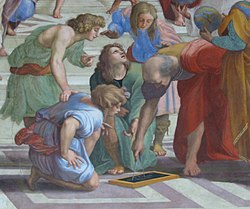 Euclid Euclid | |
| Occupation | |
|---|---|
| Occupation type | Academic |
| Description | |
| Competencies | Mathematics, analytical skills and critical thinking skills |
| Education required | Doctoral degree, occasionally master's degree |
| Fields of employment | universities, private corporations, financial industry, government |
| Related jobs | statistician, actuary |
A mathematician is someone who uses an extensive knowledge of mathematics in his or her work, typically to solve mathematical problems. Mathematics is concerned with numbers, data, quantity, structure, space, models and change.
History
This section is on the history of mathematicians. For a history of mathematics in general, see History of mathematics
One of the earliest known mathematicians was Thales of Miletus (c. 624–c.546 BC); he has been hailed as the first true mathematician and the first known individual to whom a mathematical discovery has been attributed. He is credited with the first use of deductive reasoning applied to geometry, by deriving four corollaries to Thales' Theorem.
The number of known mathematicians grew when Pythagoras of Samos (c. 582–c. 507 BC) established the Pythagorean School, whose doctrine it was that mathematics ruled the universe and whose motto was "All is number". It was the Pythagoreans who coined the term "mathematics", and with whom the study of mathematics for its own sake begins.
The first woman mathematician recorded by history was Hypatia of Alexandria (AD 350 - 415). She succeeded her father as Librarian at the Great Library and wrote many works on applied mathematics. Because of a political dispute, the Christian community in Alexandria punished her, presuming she was involved, by stripping her naked and scraping off her skin with clamshells (some say roofing tiles).
Science and mathematics in the Islamic world during the Middle Ages followed various models and modes of funding varied based primarily on scholars. It was extensive patronage and strong intellectual policies implemented by specific rulers that allowed scientific knowledge to develop in many areas. Funding for translation of scientific texts in other languages was ongoing throughout the reign of certain caliphs, and it turned out that certain scholars became experts in the works they translated and in turn received further support for continuing to develop certain sciences. As these sciences received wider attention from the elite, more scholars were invited and funded to study particular sciences. An example of a translator and mathematician who benefited from this type of support was al-Khawarizmi. A notable feature of many scholars working under Muslim rule in medieval times is that they were often polymaths. Examples include the work on optics, maths and astronomy of Ibn al-Haytham.
The Renaissance brought an increased emphasis on mathematics and science to Europe. During this period of transition from a mainly feudal and ecclesiastical culture to a predominantly secular one, many notable mathematicians had other occupations: Luca Pacioli (founder of accounting); Niccolò Fontana Tartaglia (notable engineer and bookkeeper); Gerolamo Cardano (earliest founder of probability and binomial expansion); Robert Recorde (physician) and François Viète (lawyer).
As time passed, many mathematicians gravitated towards universities. An emphasis on free thinking and experimentation had begun in Britain's oldest universities beginning in the seventeenth century at Oxford with the scientists Robert Hooke and Robert Boyle, and at Cambridge where Isaac Newton was Lucasian Professor of Mathematics & Physics. Moving into the 19th century, the objective of universities all across Europe evolved from teaching the “regurgitation of knowledge” to “encourag productive thinking.” In 1810, Humboldt convinced the King of Prussia to build a university in Berlin based on Friedrich Schleiermacher’s liberal ideas; the goal was to demonstrate the process of the discovery of knowledge and to teach students to “take account of fundamental laws of science in all their thinking.” Thus, seminars and laboratories started to evolve.
British universities of this period adopted some approaches familiar to the Italian and German universities, but as they already enjoyed substantial freedoms and autonomy the changes there had begun with the Age of Enlightenment, the same influences that inspired Humboldt. The Universities of Oxford and Cambridge emphasized the importance of research, arguably more authentically implementing Humboldt’s idea of a university than even German universities, which were subject to state authority. Overall, science (including mathematics) became the focus of universities in the 19th and 20th centuries. Students could conduct research in seminars or laboratories and began to produce doctoral theses with more scientific content. According to Humboldt, the mission of the University of Berlin was to pursue scientific knowledge. The German university system fostered professional, bureaucratically regulated scientific research performed in well-equipped laboratories, instead of the kind of research done by private and individual scholars in Great Britain and France. In fact, Rüegg asserts that the German system is responsible for the development of the modern research university because it focused on the idea of “freedom of scientific research, teaching and study.”
Notable mathematicians
A chronological list of some notable mathematicians.
-
 Archimedes, c. 287 – 212 BC
Archimedes, c. 287 – 212 BC
-
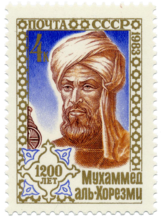 Muḥammad ibn Mūsā al-Khwārizmī, c. 780 – 850
Muḥammad ibn Mūsā al-Khwārizmī, c. 780 – 850
- Omar Khayyám, 1048 – 1131 Omar Khayyám, 1048 – 1131
-
 Leonardo Fibonacci, 1170 - 1240
Leonardo Fibonacci, 1170 - 1240
-
 Gerolamo Cardano 1501 - 1576
Gerolamo Cardano 1501 - 1576
-
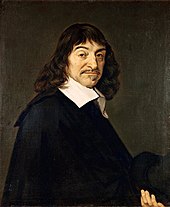 René Descartes, 1596 – 1650
René Descartes, 1596 – 1650
-
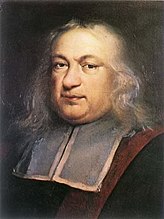 Pierre de Fermat, 1601 – 1665
Pierre de Fermat, 1601 – 1665
-
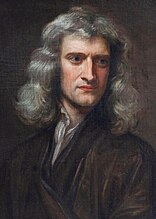 Isaac Newton, 1642 – 1727
Isaac Newton, 1642 – 1727
-
 Gottfried Wilhelm von Leibniz, 1646 – 1716
Gottfried Wilhelm von Leibniz, 1646 – 1716
-
 Leonhard Euler, 1707 – 1783
Leonhard Euler, 1707 – 1783
-
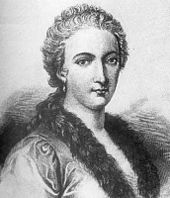 Maria Gaetana Agnesi, 1718 – 1799
Maria Gaetana Agnesi, 1718 – 1799
-
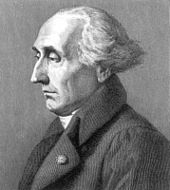 Joseph-Louis Lagrange, 1736 – 1813
Joseph-Louis Lagrange, 1736 – 1813
-
 Carl Friedrich Gauss, 1777 – 1855
Carl Friedrich Gauss, 1777 – 1855
-
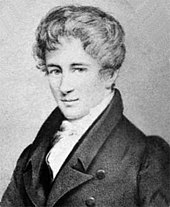 Niels Henrik Abel, 1802 – 1829
Niels Henrik Abel, 1802 – 1829
-
 Évariste Galois, 1811 – 1832
Évariste Galois, 1811 – 1832
-
 Bernhard Riemann, 1826 – 1866
Bernhard Riemann, 1826 – 1866
-
 Felix Klein, 1849 – 1925
Felix Klein, 1849 – 1925
-
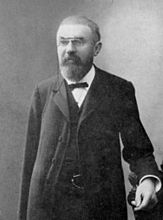 Henri Poincaré, 1854 – 1912
Henri Poincaré, 1854 – 1912
-
 David Hilbert, 1862 – 1943
David Hilbert, 1862 – 1943
-
 Emmy Noether, 1882 – 1935
Emmy Noether, 1882 – 1935
-
 Hermann Weyl, 1885 – 1955
Hermann Weyl, 1885 – 1955
-
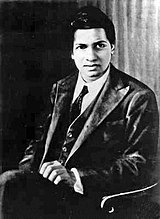 Srinivasa Ramanujan, 1887 – 1920
Srinivasa Ramanujan, 1887 – 1920
Some other notable mathematicians include Johann Bernoulli, Jacob Bernoulli, Aryabhata, Brahmagupta, Bhāskara II, Hasan Ibn Haytham, Bonaventura Cavalieri, Alexander Grothendieck, Paul Erdős, Gian Francesco Malfatti, John von Neumann, Alan Turing, Kurt Gödel, Augustin-Louis Cauchy, Georg Cantor, William Rowan Hamilton, Carl Jacobi, Nikolai Lobachevsky, Andrey Kolmogorov, Joseph Fourier, Giuseppe Peano and Pierre-Simon Laplace.
Required education
Mathematicians usually cover a breadth of topics within mathematics in their undergraduate education, and then proceed to specialize in topics of their own choice at the graduate-level. In some universities, a qualifying exam serves to test both the breadth and depth of a student's understanding of mathematics; the students, who pass, are permitted to work on a doctoral dissertation.
Activities
Applied mathematics
Main article: Applied mathematicsMathematicians involved with solving problems with applications in real life are called applied mathematicians. Applied mathematicians are mathematical scientists who, with their specialized knowledge and professional methodology, approach many of the imposing problems presented in related scientific fields. With professional focus on a wide variety of problems, theoretical systems, and localized constructs, applied mathematicians work regularly in the study and formulation of mathematical models. Mathematicians and applied mathematicians are considered to be two of the STEM (science, technology, engineering, and mathematics) careers.
The discipline of applied mathematics concerns itself with mathematical methods that are typically used in science, engineering, business, and industry; thus, "applied mathematics" is a mathematical science with specialized knowledge. The term "applied mathematics" also describes the professional specialty in which mathematicians work on problems, often concrete but sometimes abstract. As professionals focused on problem solving, applied mathematicians look into the formulation, study, and use of mathematical models in science, engineering, business, and other areas of mathematical practice.
Abstract mathematics
Main article: Pure mathematicsPure mathematics is mathematics that studies entirely abstract concepts. From the eighteenth century onwards, this was a recognized category of mathematical activity, sometimes characterized as speculative mathematics, and at variance with the trend towards meeting the needs of navigation, astronomy, physics, economics, engineering, and other applications.
Another insightful view put forth is that pure mathematics is not necessarily applied mathematics: it is possible to study abstract entities with respect to their intrinsic nature, and not be concerned with how they manifest in the real world. Even though the pure and applied viewpoints are distinct philosophical positions, in practice there is much overlap in the activity of pure and applied mathematicians.
To develop accurate models for describing the real world, many applied mathematicians draw on tools and techniques that are often considered to be "pure" mathematics. On the other hand, many pure mathematicians draw on natural and social phenomena as inspiration for their abstract research.
Mathematics teaching
Many professional mathematicians also engage in the teaching of mathematics. Duties may include:
- teaching university mathematics courses;
- supervising undergraduate and graduate research; and
- serving on academic committees.
Consulting
Many careers in mathematics outside of universities involve consulting. For instance, actuaries assemble and analyze data to estimate the probability and likely cost of the occurrence of an event such as death, sickness, injury, disability, or loss of property. Actuaries also address financial questions, including those involving the level of pension contributions required to produce a certain retirement income and the way in which a company should invest resources to maximize its return on investments in light of potential risk. Using their broad knowledge, actuaries help design and price insurance policies, pension plans, and other financial strategies in a manner which will help ensure that the plans are maintained on a sound financial basis.
As another example, mathematical finance will derive and extend the mathematical or numerical models without necessarily establishing a link to financial theory, taking observed market prices as input. Mathematical consistency is required, not compatibility with economic theory. Thus, for example, while a financial economist might study the structural reasons why a company may have a certain share price, a financial mathematician may take the share price as a given, and attempt to use stochastic calculus to obtain the corresponding value of derivatives of the stock (see: Valuation of options; Financial modeling).
Occupations
According to the Dictionary of Occupational Titles occupations in mathematics include the following.
- Mathematician
- Operations-Research Analyst
- Mathematical Statistician
- Mathematical Technician
- Actuary
- Applied Statistician
- Weight Analyst
Quotations about mathematicians
The following are quotations about mathematicians, or by mathematicians.
- A mathematician is a device for turning coffee into theorems.
- —Attributed to both Alfréd Rényi and Paul Erdős
- Die Mathematiker sind eine Art Franzosen; redet man mit ihnen, so übersetzen sie es in ihre Sprache, und dann ist es alsobald ganz etwas anderes. (Mathematicians are a sort of Frenchmen; if you talk to them, they translate it into their own language, and then it is immediately something quite different.)
- Each generation has its few great mathematicians...and research harms no one.
- —Alfred W. Adler (1930- ), "Mathematics and Creativity"
- In short, I never yet encountered the mere mathematician who could be trusted out of equal roots, or one who did not clandestinely hold it as a point of his faith that x squared + px was absolutely and unconditionally equal to q. Say to one of these gentlemen, by way of experiment, if you please, that you believe occasions may occur where x squared + px is not altogether equal to q, and, having made him understand what you mean, get out of his reach as speedily as convenient, for, beyond doubt, he will endeavor to knock you down.
- —Edgar Allan Poe, The purloined letter
- A mathematician, like a painter or poet, is a maker of patterns. If his patterns are more permanent than theirs, it is because they are made with ideas.
- —G. H. Hardy, A Mathematician's Apology
- Some of you may have met mathematicians and wondered how they got that way.
- It is impossible to be a mathematician without being a poet in soul.
- There are two ways to do great mathematics. The first is to be smarter than everybody else. The second way is to be stupider than everybody else—but persistent.
- Mathematics is the queen of the sciences and arithmetic the queen of mathematics.
Women in mathematics
See also: List of female mathematiciansWhile the majority of mathematicians are male, there have been some demographic changes since World War II. For example in Europe, from 1992 onwards, several women have been laureates of the prestigious EMS Prize. Some prominent female mathematicians throughout History are Hypatia of Alexandria (ca. 400 AD), Ada Lovelace (1815–1852), Maria Gaetana Agnesi (1718–1799), Emmy Noether (1882–1935), Sophie Germain (1776–1831), Sofia Kovalevskaya (1850–1891), Alicia Boole Stott (1860–1940), Rózsa Péter (1905–1977), Julia Robinson (1919–1985), Olga Taussky-Todd (1906–1995), Émilie du Châtelet (1706–1749), Mary Cartwright (1900–1998), Olga Ladyzhenskaya (1922–2004), Olga Oleinik (1925–2001) and Maryam Mirzakhani.
The Association for Women in Mathematics is a professional society whose purpose is "to encourage women and girls to study and to have active careers in the mathematical sciences, and to promote equal opportunity and the equal treatment of women and girls in the mathematical sciences." The American Mathematical Society and other mathematical societies offer several prizes aimed at increasing the representation of women and minorities in the future of mathematics.
Prizes in mathematics
There is no Nobel Prize in mathematics, though sometimes mathematicians have won the Nobel Prize in a different field, such as economics. Prominent prizes in mathematics include the Abel Prize, the Chern Medal, the Fields Medal, the Gauss Prize, the Nemmers Prize, the Balzan Prize, the Crafoord Prize, the Shaw Prize, the Steele Prize, the Wolf Prize, the Schock Prize, and the Nevanlinna Prize.
See also
- Human computer
- List of amateur mathematicians
- List of female mathematicians
- Lists of mathematicians
- Mathematical joke
- A Mathematician's Apology
- Men of Mathematics (book)
- Mental calculator
Notes
- Boyer (1991), A History of Mathematics, p. 43
- (Boyer 1991, "Ionia and the Pythagoreans" p. 49)
- Ecclesiastical History,Bk VI: Chap. 15
- Abattouy, M., Renn, J. & Weinig, P., 2001. Transmission as Transformation: The Translation Movements in the Medieval East and West in a Comparative Perspective. Science in Context, 14(1-2), 1-12.
- Röhrs, "The Classical Idea of the University," Tradition and Reform of the University under an International Perspective p.20
- Rüegg, "Themes", A History of the University in Europe, Vol. III, p.5-6
- Rüegg, "Themes", A History of the University in Europe, Vol. III, p.12
- Rüegg, "Themes", A History of the University in Europe, Vol. III, p.13
- Rüegg, "Themes", A History of the University in Europe, Vol. III, p.16
- Rüegg, "Themes", A History of the University in Europe, Vol. III, p.17-18
- Rüegg, "Themes", A History of the University in Europe, Vol. III, p.31
- "Thinking About a STEM Career: Read This!". The Learning Curve. Retrieved 10 May 2013.
- See for example titles of works by Thomas Simpson from the mid-18th century: Essays on Several Curious and Useful Subjects in Speculative and Mixed Mathematicks, Miscellaneous Tracts on Some Curious and Very Interesting Subjects in Mechanics, Physical Astronomy and Speculative Mathematics.
- Andy Magid, Letter from the Editor, in Notices of the AMS, November 2005, American Mathematical Society, p.1173.
- "020 OCCUPATIONS IN MATHEMATICS". Dictionary Of Occupational Titles. Retrieved 2013-01-20.
- "Biography of Alfréd Rényi". History.mcs.st-andrews.ac.uk. Retrieved 2012-08-17.
- Maximen und Reflexionen, Sechste Abtheilung cited in Moritz, Robert Edouard (1958) , On Mathematics / A Collection of Witty, Profound, Amusing Passages about Mathematics and Mathematicians, Dover, p. 123, ISBN 0-486-20489-8
- Alfred Adler, "Mathematics and Creativity," The New Yorker, 1972, reprinted in Timothy Ferris, ed., The World Treasury of Physics, Astronomy, and Mathematics, Back Bay Books, reprint, June 30, 1993, p, 435.
- Sartorius von Waltershausen: Gauss zum Gedachtniss. (Leipzig, 1856), p. 79 cited in Moritz, Robert Edouard (1958) , On Mathematics / A Collection of Witty, Profound, Amusing Passages about Mathematics and Mathematicians, Dover, p. 271, ISBN 0-486-20489-8
References
- A Mathematician's Apology, by G. H. Hardy. Memoir, with foreword by C. P. Snow.
- Reprint edition, Cambridge University Press, 1992; ISBN 0-521-42706-1
- First edition, 1940
- Paul Halmos. I Want to Be a Mathematician. Springer-Verlag 1985.
- Dunham, William. The Mathematical Universe. John Wiley 1994.
External links
- Occupational Outlook: Mathematicians. Information on the occupation of mathematician from the US Department of Labor.
- Sloan Career Cornerstone Center: Careers in Mathematics. Although US-centric, a useful resource for anyone interested in a career as a mathematician. Learn what mathematicians do on a daily basis, where they work, how much they earn, and more.
- The MacTutor History of Mathematics archive. A comprehensive list of detailed biographies.
- The Mathematics Genealogy Project. Allows to follow the succession of thesis advisors for most mathematicians, living or dead.
- Weisstein, Eric W. "Unsolved Problems". MathWorld.
- Middle School Mathematician Project Short biographies of select mathematicians assembled by middle school students.
- Career Information for Students of Math and Aspiring Mathematicians from MathMajor